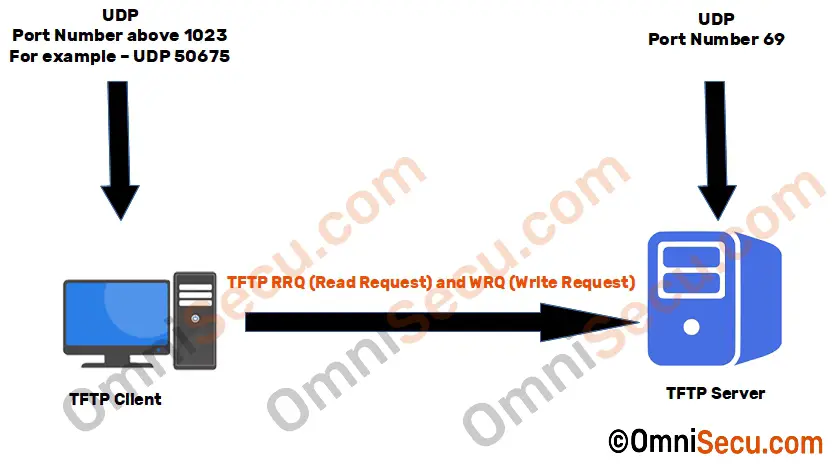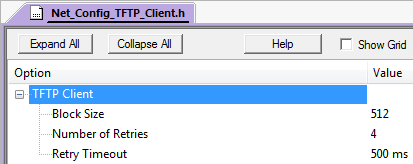

- #Arch tftp client how to#
- #Arch tftp client install#
- #Arch tftp client code#
- #Arch tftp client windows#
What we’re asking dnsmasq to do is watch for DHCP requests, and rather than respond to those requests directly, wait for the primary DHCP server to assign an IP address.

We need to add our settings to the dnsmasq config file, which is where most of the magic happens. Reconfigure dnsmasq to server TFTP files only to Raspberry Pi instances as described here: Sudo cp /nfs/raspi1/boot/bootcode.bin /tftpboot/bootcode.binĮnable and restart rpcbind and nfs-kernel-server services: sudo systemctl enable rpcbind
#Arch tftp client code#
Ensure you replace with the IP address of your network boot server (note the modprobe.blacklist is required to successfully boot the Raspberry Pi 3B+ as described here): echo "console=serial0,115200 console=tty root=/dev/nfs nfsroot=:/nfs/raspi1,vers=3 rw ip=dhcp rootwait elevator=deadline modprobe.blacklist=bcm2835_v4l2" | sudo tee /nfs/raspi1/boot/cmdline.txtĮnable SSH in the network boot client image: sudo touch /nfs/raspi1/boot/sshĬreate a network share containing the network boot client image: echo "/nfs/raspi1 *(rw,sync,no_subtree_check,no_root_squash)" | sudo tee -a /etc/exportsĬreate a TrivialFTP folder containing boot code for all network boot clients sudo mkdir /tftpboot Replace the boot command in the network boot client image to boot from a network share. Mount the Raspbian Buster Lite image to known locations: sudo kpartx -a -v -raspbian-buster.imgĬopy the Raspbian Buster Lite image to the network boot client image directory created above: sudo cp -a rootmnt/* /nfs/raspi1/Įnsure the network boot client image doesn't attempt to look for filesystems on the SD Card: sudo sed -i /UUID/d /nfs/raspi1/etc/fstab

Make a directory to contain the first network boot client image: sudo mkdir -p /nfs/raspi1ĭownload and unzip the latest Raspbian Buster Lite image: wget
#Arch tftp client install#
Install required software using the following command: sudo apt-get install unzip kpartx dnsmasq nfs-kernel-server Furthermore, after installation, I enabled SSH and used SSH to execute the following.
#Arch tftp client windows#
I will not cover instructions for doing this here as there are many virtualisation engines and instructions for each would be different suffice to say I used a Gen 1 Hyper-V instance on Windows Server 2016 with 4 virtual cores, 8Gb of RAM and 64Gb of disk-space. Steps Network Boot ServerĬreate a virtual machine and install Debian Buster with Raspberry Pi Desktop. As I want to use an Linux server - running in a virtualised environment no less - I will be using additional steps from Hackaday's excellent article on Network Booting The Pi 4.Īdditionally, while each of the network boot client Raspberry Pi's will be running Raspbian Buster Lite, they will be used for different purposes so must run a unique Raspbian installation. The official Raspberry Pi Network Boot instructions assume you're using a Raspberry Pi as the network boot server and can therefore "copy" a Raspbian installation from an SD Card that has been installed on the network boot client Raspberry Pi. Multiple Raspberry Pi 3B+ (the non-plus Raspberry Pi 3B requires additional steps) as network boot clients.Hyper-V Virtual Machine running Raspberry Pi Desktop (aka Debian Buster with Raspberry Pi Desktop) downloaded from here as the network boot server.While this has been covered many times in other posts none of them worked for me "out of the box".
#Arch tftp client how to#
This is just a short post - mostly for my own benefit - on how to network boot multiple Raspberry Pis from an x86 Linux Server.


 0 kommentar(er)
0 kommentar(er)
